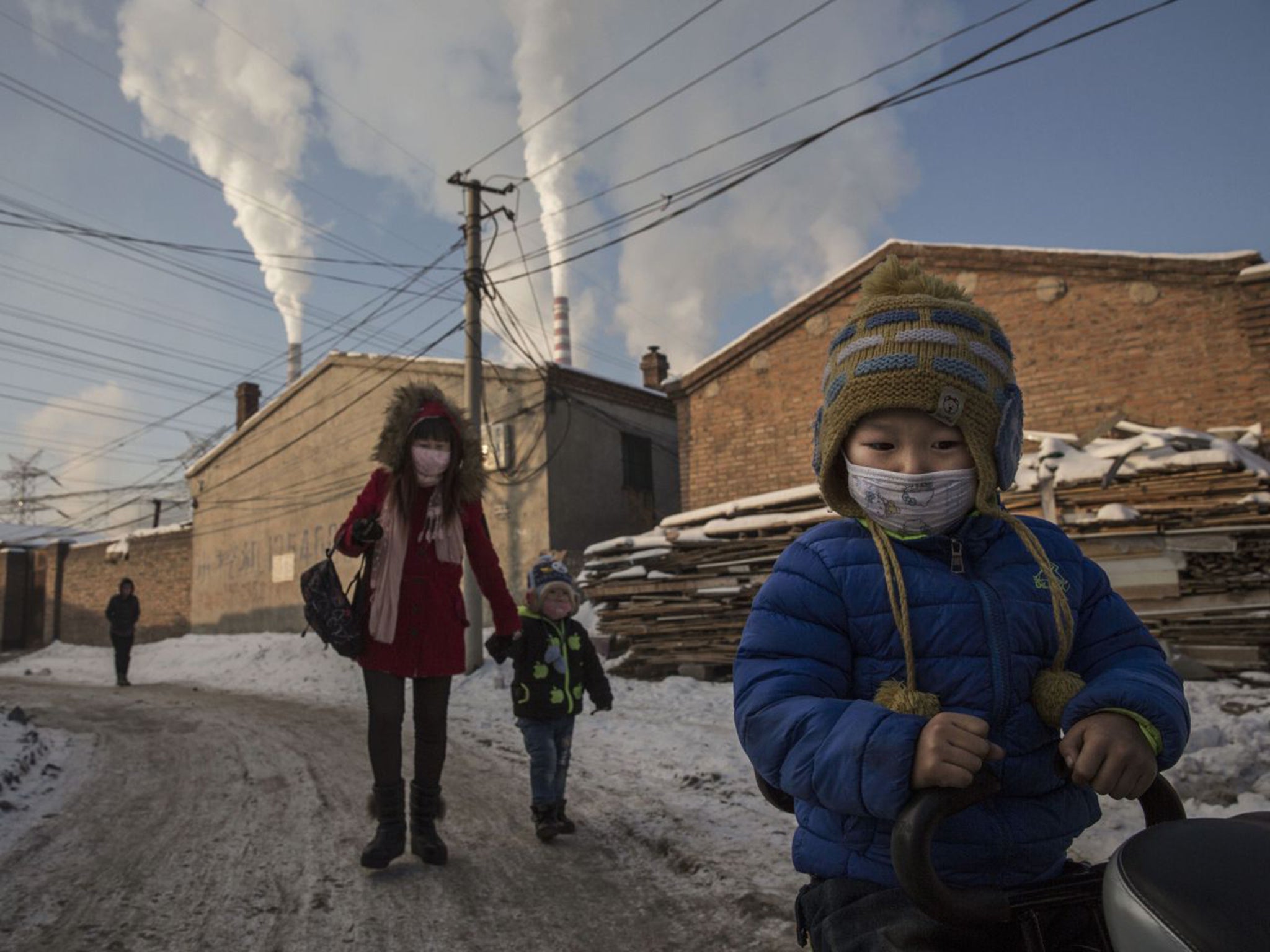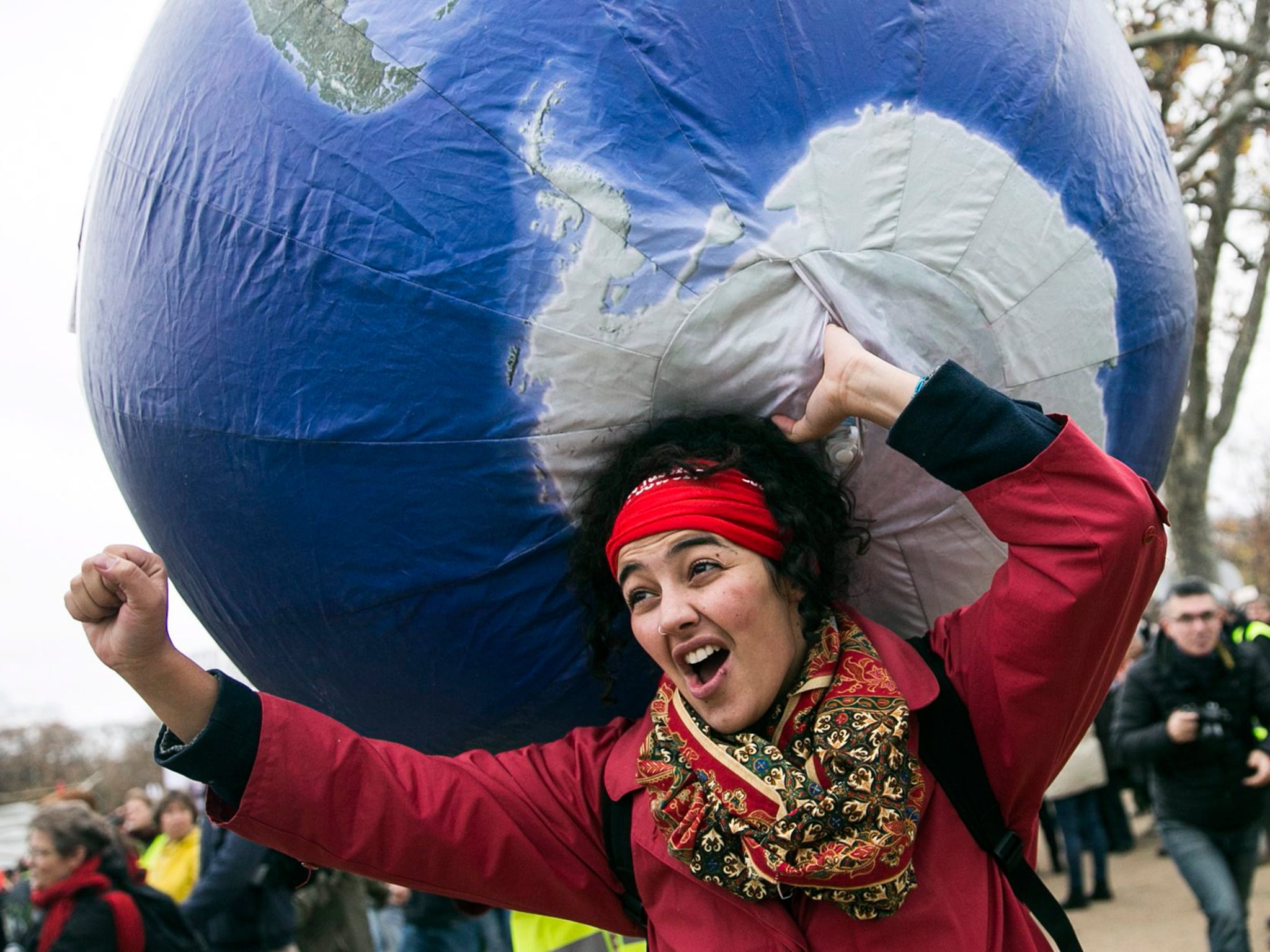COP21: The Paris climate treaty is a long way from solving the problem but is still a genuine landmark
There is no guarantee it will effect the necessary cuts in emissions

Your support helps us to tell the story
From reproductive rights to climate change to Big Tech, The Independent is on the ground when the story is developing. Whether it's investigating the financials of Elon Musk's pro-Trump PAC or producing our latest documentary, 'The A Word', which shines a light on the American women fighting for reproductive rights, we know how important it is to parse out the facts from the messaging.
At such a critical moment in US history, we need reporters on the ground. Your donation allows us to keep sending journalists to speak to both sides of the story.
The Independent is trusted by Americans across the entire political spectrum. And unlike many other quality news outlets, we choose not to lock Americans out of our reporting and analysis with paywalls. We believe quality journalism should be available to everyone, paid for by those who can afford it.
Your support makes all the difference.How can people be wildly enthusiastic about a treaty which does not solve the problem it addresses? For the world has not been saved yet, though you might think so from the way the politicians and officials who negotiated the Paris Agreement on climate change jumped for joy and clapped each other on the back after the deal was done in the Le Bourget conference centre on 12 December.
Laurent Fabius, the smooth-suited French Foreign Minister who was the president of the meeting, looked particularly pleased with himself, and President Barack Obama tweeted his unalloyed delight – he had a big hand in the agreement and it will represent a major part of his political legacy – but the treaty which has been four laborious years in the making is simply not enough. It will not, as it stands, keep global warming below the recognised danger threshold for the world of 2C above the pre-industrial level – still less below the new “aspirational” limit of 1.5C, which the conference decided upon in one of its most eye-catching moves.
We need to be clear: there is no guarantee whatsoever that the present settlement will bring about the necessary cuts in emissions of carbon dioxide and other greenhouse gases which are causing the atmosphere to warm, with potentially disastrous effect. The voluntary CO2 reductions which virtually all countries promised in the run-up to the conference, even if implemented in full – and that’s a big if – will only hold the projected warming down to 2.7 C at best, which is well into the danger zone for the world; and this recognition of the agreement’s limitations is at the heart of the criticism levelled at it over the weekend from some of the more radical climate campaigning groups.
So why the celebration? To understand the enthusiasm of the treaty’s progenitors you need to step back and look at what has been achieved. Firstly, the treaty was agreed, by all the 195 nations present in Paris. This was by no means a given. UN agreements need to be made by consensus – ie, every party has to sign on the dotted line – and with such a vast number of countries all grandstanding to different political constituencies back home, over such a hugely complex text, the possibility of discord was always present. The last time such a comprehensive deal was attempted, at the Copenhagen climate conference of 2009, it did indeed fall apart.
Secondly, the treaty commits all the countries of the world, for the first time ever, to cut their carbon emissions. This is an enormous step forward, not least because until 12 December the three-biggest carbon emitters, China, the US and India respectively, with about half of the world’s CO2 emissions between them, were not bound to reduce them, in any way. But even more, it has smoothed over the fault line which has bedevilled the climate talks since they began in 1992: the argument about who should do what, between the developed (rich) and the developing (poor) countries.
This argument led to the Copenhagen failure. In the past it was agreed that only developed countries needed to take action to cut carbon, as they could afford to, and historically they produced most of it anyway; but in the past 20 years, as developing nations such as China and India have boomed, they have come under increasing pressure to make cuts of their own. Now it is agreed that, although the special circumstances of the developing countries are formally recognised, all countries have to act.
Thirdly, the Paris Agreement, in its key provisions, creates a subtle but powerful mechanism to ratchet up the carbon-cutting commitments of all countries, over time, until they reach the point where global warming can indeed be held in check.
It consists of two elements: a legally binding commitment on all nations to come back with stronger carbon-cutting plans every five years (the agreement’s Article 4) and a transparency agreement applicable equally to all countries, developed and developing, to make sure no-one is cheating (Article 13).

Perhaps you have to know government from the inside to understand the boldness of this; for it was this which excited the enthusiasm of two very experienced observers of the climate change negotiating process I spoke to. One was Michael Jacobs, now visiting professor at the Grantham Institute at the London School of Economics, and formerly special adviser on climate change to Gordon Brown as Prime Minister; the other was Elliot Diringer of the Washington-based Centre for Climate and Energy Solutions and formerly a senior policy adviser to the Clinton White House.
Michael Jacobs said: “Governments have created a system to put immense pressure on themselves to act, every five years, which is something they would normally never do. They never set themselves ‘impossible’ tasks, but they have done that here. It’s extraordinary.”
Elliot Diringer said: “This cycle of commitment – tell us what you’ll do, show us you’re doing it, tell us what you’ll do next – will heighten confidence that all countries are doing their fair share, and that will make it easier for each to do more. It will keep the pressure on governments and strengthen their ambition going forward.”
Of course, it is perfectly possible that in the future, countries will not do enough; but a machine has been constructed to push them, and both men, deeply knowledgeable about the long and difficult negotiations leading up to Paris, thought that the final deal was exceptional. “The content is about as good as we could have imagined,” Elliot Diringer said.
That’s why the politicians and officials who negotiated it were clapping each other on the back on 12 December. Let us be clear: the Paris Agreement doesn’t solve the problem of global climate change. But it is a true landmark, as for the first time it offers a route to the solution, and for that we should all give thanks.
Join our commenting forum
Join thought-provoking conversations, follow other Independent readers and see their replies
Comments